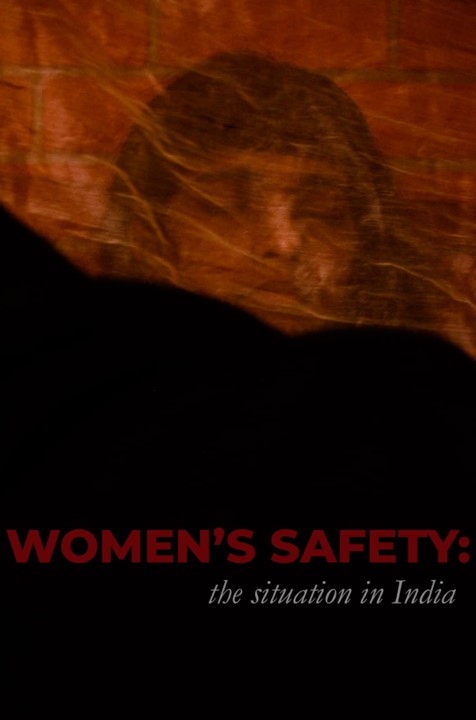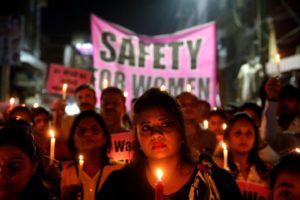
India is a country of vast culture and beliefs. We adorn our women with the jewels and statuses of gods. We call our country “Bharat Mata”. However, most of this respect comes in the form of them just being mothers. Women are rarely looked beyond their role of a caregiver; someone whose sole duty is to give birth and run a household. At the same time, this is a country that comes from a long line of female children being unwelcome—female infanticide being a major cause.
Girls have their entire life stolen from them because of the mere fact that they are girls.
Our history is littered with incidences of women being stripped of their basic right to survive. You see it with practices such as the Sati Pratha, where women were forced to be burned alive if they were widowed. You see it in the Mahabharata when Duryodhana tried to disrobe Draupadi by pulling her saree. You see women being treated like objects—a prize for the winning man in the situation. You see women being insulted and demeaned, and be portrayed as inferior everywhere.
The girls who manage to survive this archaic mentality grow up in a world where they are constantly objectified. While some fight for their basic right to exist, others have the privilege of a safe household and education. However, none of that guarantees a woman her safety.
While society is more accepting to women are going on out into the world to find their place now, it cannot be said that we have reached a society where women are truly safe and respected.
Seeing women in jobs and positions all around the world—from CEOs to cab drivers. is a good sign that the patriarchal mindset of society has changed to some extent. But even in this globalised world, women never stop facing challenges based on gender, and it starts at a very young age.
It starts at homes and school, where casual sexism is taught and ingrained within growing kids. Most girls grow up with statements such as “your skirt is too short”, “your hair should be tied up”, “your shoulders can’t show”, “don’t wear makeup, it distracts boys”— and yet
No one is ready to hold men responsible and teach them from an early age that women don’t exist for their objectification, that they aren’t just shells that help them fulfil their sexual desires.
Male domination takes place in so many ways—from eve-teasing to sexual harassment to rape, women are constantly undermined by men. A certain sort of idea of false male superiority exists in India, and it is one of the prime reasons women safety is a huge concern.
According to the National Crime Records Bureau, there were a total of 2,28,650 reported cases of crime against women in the year 2011. This number rose to over 3,00,000 cases in 2015.
Approximately one-third of women in the National Family Health Survey in 2016 said that they were victims of domestic abuse, and yet less than 1% reported it to the police.
According to NRCB data, there were a total of 4,15,786 reported cases of rape in India between 2001 and 2017. The victim knew the abuser in 98% of these cases.
However, this figure does not describe the full extent of the issue. It shows only the reported number of rape cases in that time span. This leads to the quality of the data being questioned.
According to Human Rights Watch, several thousands of cases of violence against women go unreported because the victims fear stigmatization. Living in a country where the patriarchal justice system offers no protection to victims or witnesses does not help the cause.
Activists have pointed out the fact that this figure is taken from police stations. They say that police officers, judges, politicians, and other bureaucrats do not understand the true definition of rape. They see it as a loss of the woman’s ‘honour’ rather than the breach of consent. Inter-religious or inter-caste consensual relationships, therefore, become an ‘act of dishonour’ for the woman in the eyes of such people; and subsequent so-called honour crimes and restrictions are seen as acts protecting the woman. On the other side, cases like that of domestic abuse or marital rape go unnoticed, since they feel the ‘honour’ of the married woman can’t be violated.
Shockingly, marital rape is not a criminal offence in India. Section 375 of the Indian Penal Code considers marital rape a crime only if the bride is below 15 years of age. The Protection of Women from Domestic Violence Act 2005 (PWDVA) outlaws marital rape, but only offers victims a civil remedy.
Education for women, which is another prevalent issue in India, also largely contributes to the number of reported cases of violence. Studies have shown that the number of women who report physical violence declined from 38% among women with no education to 16% among women with more than 12 years of education.
According to the National Family Health Survey 4 in the year 2016, the percentage of women with more than 10 years of education dropped from 51.5% in urban areas to 27.3% in rural areas, amounting to a total of 35.7% of the entire female population of India. This is a 13.5% increase from the figures of the previous edition in the year 2006.
The Nirbhaya case in 2012 catalysed a number of new laws to control gender-based violence, such as the Criminal Law (Amendment) Act, 2013, Protection of Children from Sexual Offences Act, and the Scheduled Castes and Scheduled Tribes (Prevention of Atrocities) Act.
Between the years 2012 and 2018, there was a 34% increase in the number of rape cases reported to the police. This most likely points to the increased willingness of the survivors seeking a judicial remedy.
All of these statistics highlight an important question that often remains unanswered—
In a country such as India, which prides itself on treating women like goddesses, why is it that women are not safe?
In a country where talking about sex is taboo, children are barely ever provided quality sex education. They aren’t taught how consent works, or that somebody uninterested in them is not “there for the taking”.
It is vital that things change, that women are allowed to feel safe while walking the streets and are allowed to live their life the way they want, devoid of male objectification and dominance. From family to educational institutes, males should be taught about respecting females. Not only that, but stricter laws should be introduced in order to keep those who violate women and their safety in any sphere responsible.
Images Courtesy: The Washington Post, WikiCommons
Sources: National Family Health Survey (NFHS) 4, National Crime Records Bureau, Human Rights Watch, News18, India Today
Written by Rushil Dalal and Tanya Jain for MTTN
Featured image by Ishika Somany and Samara Chandavarkar for MTTN


Leave a Reply
You must be logged in to post a comment.